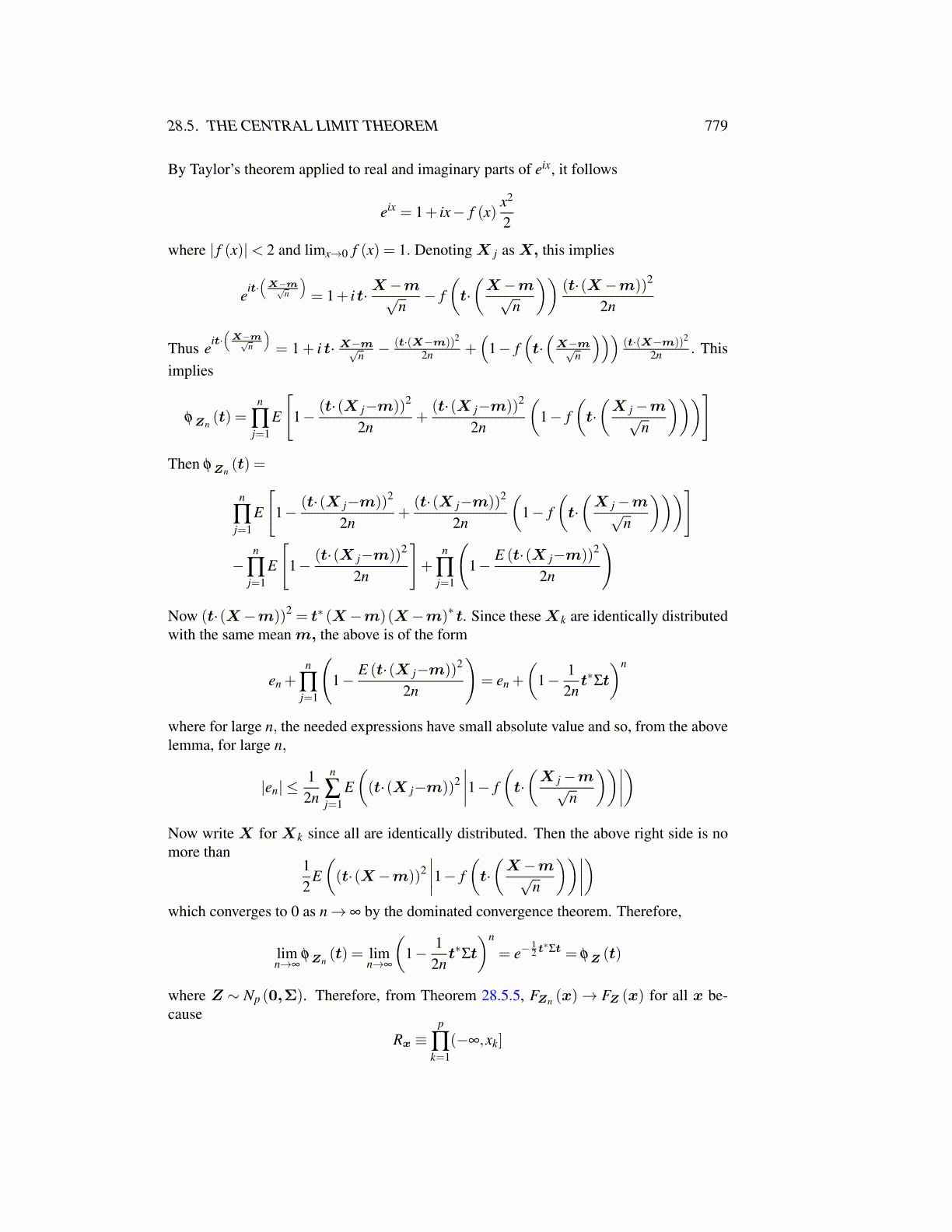
28.5. THE CENTRAL LIMIT THEOREM 779
By Taylor’s theorem applied to real and imaginary parts of eix, it follows
eix = 1+ ix− f (x)x2
2
where | f (x)|< 2 and limx→0 f (x) = 1. DenotingX j asX, this implies
eit·(X−m√
n
)= 1+ i t·X−m√
n− f
(t·(X−m√
n
))(t·(X−m))2
2n
Thus eit·(X−m√
n
)= 1+ i t· X−m√n −
(t·(X−m))2
2n +(
1− f(t·(
X−m√n
)))(t·(X−m))2
2n . Thisimplies
φZn(t) =
n
∏j=1
E
[1−
(t·(X j−m))2
2n+
(t·(X j−m))2
2n
(1− f
(t·(X j−m√
n
)))]
Then φZn(t) =
n
∏j=1
E
[1−
(t·(X j−m))2
2n+
(t·(X j−m))2
2n
(1− f
(t·(X j−m√
n
)))]
−n
∏j=1
E
[1−
(t·(X j−m))2
2n
]+
n
∏j=1
(1−
E (t·(X j−m))2
2n
)
Now (t·(X−m))2 = t∗ (X−m)(X−m)∗ t. Since theseXk are identically distributedwith the same meanm, the above is of the form
en +n
∏j=1
(1−
E (t·(X j−m))2
2n
)= en +
(1− 1
2nt∗Σt
)n
where for large n, the needed expressions have small absolute value and so, from the abovelemma, for large n,
|en| ≤1
2n
n
∑j=1
E((t·(X j−m))2
∣∣∣∣1− f(t·(X j−m√
n
))∣∣∣∣)Now write X for Xk since all are identically distributed. Then the above right side is nomore than
12
E((t·(X−m))2
∣∣∣∣1− f(t·(X−m√
n
))∣∣∣∣)which converges to 0 as n→ ∞ by the dominated convergence theorem. Therefore,
limn→∞
φZn(t) = lim
n→∞
(1− 1
2nt∗Σt
)n
= e−12 t∗Σt = φZ (t)
where Z ∼ Np (0,Σ). Therefore, from Theorem 28.5.5, FZn (x)→ FZ (x) for all x be-cause
Rx ≡p
∏k=1
(−∞,xk]